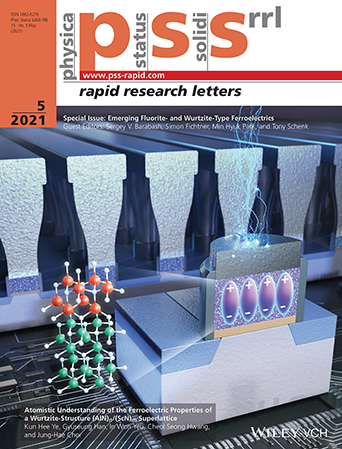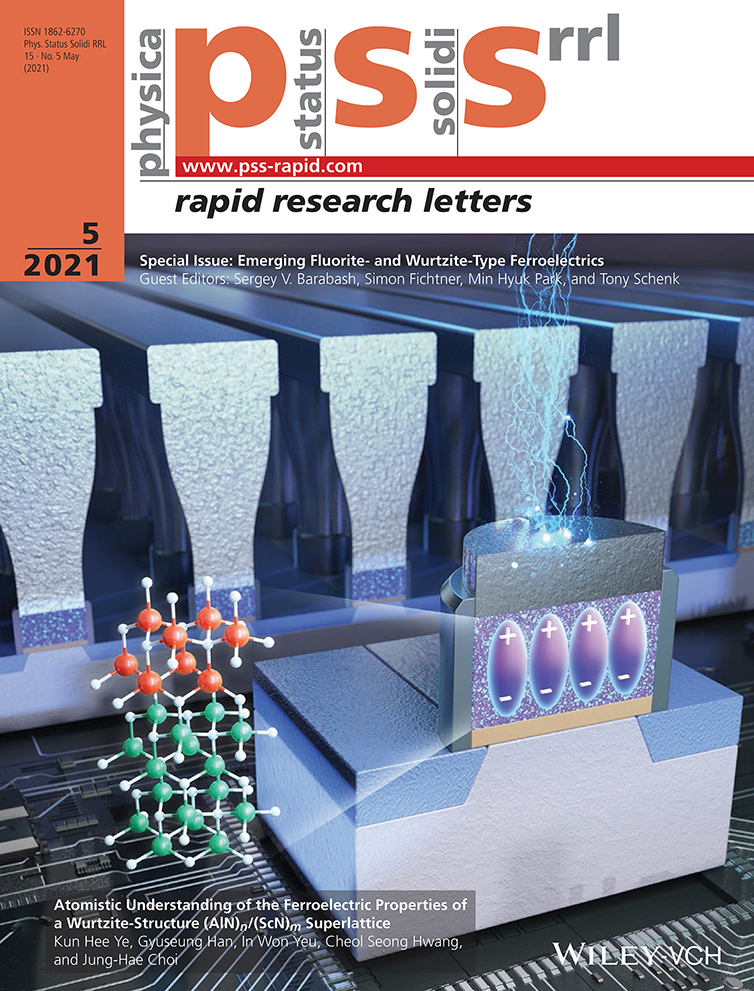Atomistic Understanding of the Ferroelectric Properties of a Wurtzite-Structure (AlN)n/(ScN)m Superlattice
Graphical Abstract
In article number 2100009, the ab initio calculations by Cheol Seong Hwang, Jung-Hae Choi, and co-workers show that wurtzite-type AlN can have a suitable range of ferroelectric switching barrier (Ea) and spontaneous polarization (Ps) by forming superlattice structures with ScN. The Ea is dominated by the local structure instability, while the Ps is significantly affected by the structural parameters and the Born effective charge.





